Last updated on October 25th, 2022
Vietnam, officially the Socialist Republic of Vietnam, is the easternmost country on the Indochina Peninsula. It has an area of 331,210 square km. Hanoi is the country’s capital and Ho Chi Minh City is its largest city. Vietnamese is the official language of Vietnam. Its official currency is Dong (VND). It is bordered by three countries – China, Laos, and Cambodia.
Are you one of those people that only think of Vietnam in terms of that 20th Century war? With these 51 interesting facts about Vietnam, explore how fascinating the country has become over the years; with beautiful scenery, amazing cuisine, and an awesome kaleidoscope of cultures that you definitely need to experience for yourself!
Vietnam’s history and culture
1. Legend has it that the peoples of this land originated from a union between an immortal Chinese princess and “The Dragon Lord of the Seas.”
2. The country’s name was originally spelled as two words, Viet Nam.
3. Their culture is a complex adaptation of Chinese, Japanese, French and American colonial influences.
4. In 938 AD, the Vietnamese developed a trade system to exchange animal skins, ivory and tropical goods for Chinese scrolls on administration, philosophy and literature.
5. The body of their first president Ho Chi Minh (Uncle Ho) was embalmed, and is on display in a mausoleum.
6. Their flag consists of a golden star with five points to represent farmers, workers, intellectuals, youth, and soldiers. The red background pays tribute to the bloodshed during the wars.
Flag of Vietnam
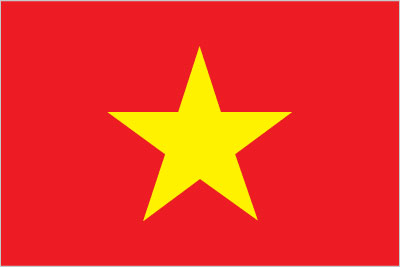
7. Traditional Vietnamese culture revolves around the core values of humanity, community, harmony, and family.
8. Tet Nguyen Dan (or simply Tet) is the most important festival in Vietnam. It celebrates rebirth and is an equivalent of the Lunar New Year.
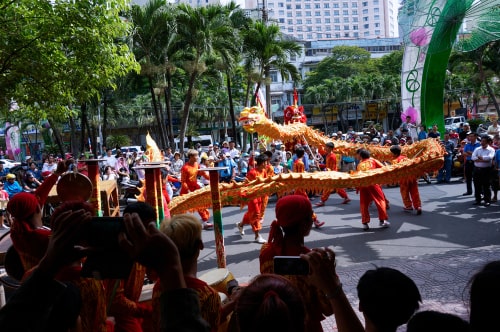
9. They also have a “love market” festival that is observed to commemorate a tragic forbidden love story and to give modern-day ex-lovers a chance to meet on neutral territory.
10. Vietnamese traditional fashion is easily distinguished by the flowing robes (Ao Dai) and conical hats (Non La).
Vietnam’s art and architecture
11. Their famous Dong Son drums are a relic of the sophisticated Bronze Age culture between 500 BC and 300 AD.
12. Water puppetry is another popular art form that dates back as far as the 11th century.
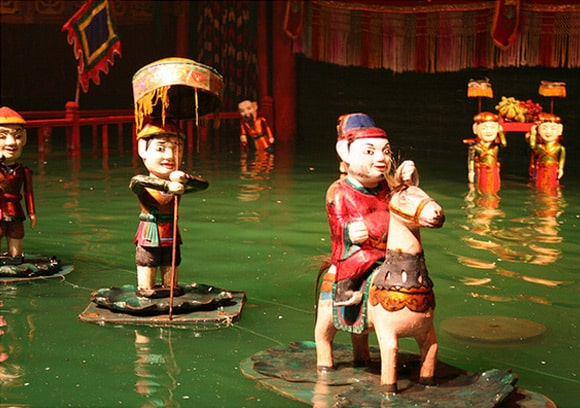
13. Construction styles vary from traditional stilt houses and Chinese style pagodas to colonial French architecture and thin tube houses.
14. Hoi An ancient town was a trading port from the 15th century that has endured up to date.
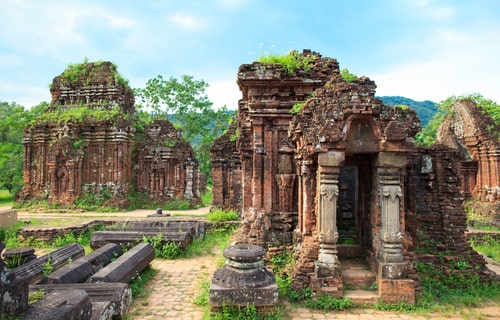
15. The My Son Sanctuary is a structural display of Hindu tower temples developed over ten centuries.
16. Hue’s royal tombs are a vivid portrayal of ancient royal art, architecture, and geomancy.
17. In religious construction, pagodas are for worship and offerings, while temples are built to honor historical figures.
18. Thu Phap calligraphy involves “blowing beauty into every single character.”
19. Quan Ho folk songs are love duets between male and female singers considered by UNESCO to be an intangible cultural heritage of humanity, Geography, and Landscape.
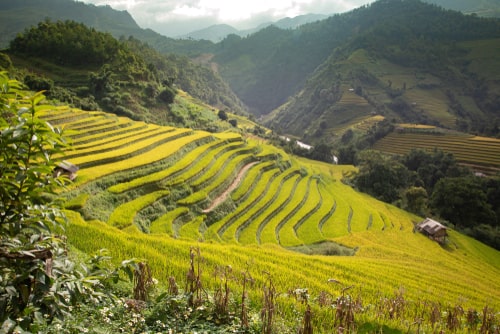
20. Rice terraces are planted that way to enable the crop to grow along the steep mountainsides.
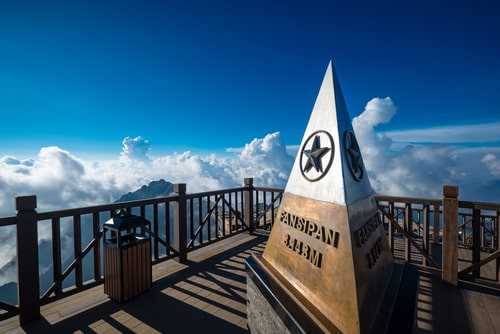
21. Fansipan, also known as The Roof of Indochina is the highest mountain peak in the region.
22. The Red River in the North and Mekong in the South are surrounded by extremely fertile plains on which most of the country’s crops are grown.
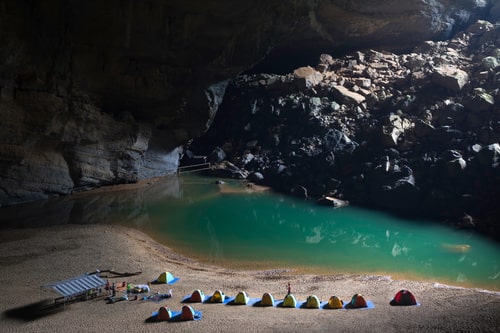
23. Vietnam is also home to the world’s largest cave, Son Doong.
24. The Bin Chau Hotsprings are hot enough to boil eggs.
25. The Perfume River is so named due to the scent of the tropical flowers that fall into the water during autumn.
Vietnam’s food and cuisine
26. The Vietnamese believe in Three Kitchen Gods or Tao Quan, who live with and observe each family’s actions. They depart at the end of the Lunar Year to report their findings to Ngoc Hoan, The Jade Emperor.
27. Their cuisine is well known for its balance of the five Asian elements; spicy, sour, bitter, salty and sweet.
28. The principle of yin and yang is also applied in composing a meal, to provide contrasts in spiciness and temperature of the food.
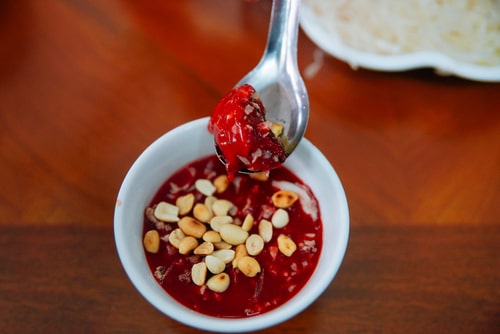
29. Tiet Canh is a traditional Vietnamese dish made from fresh animal blood.
30. When cooking a pig, the entire animal is used including the innards.
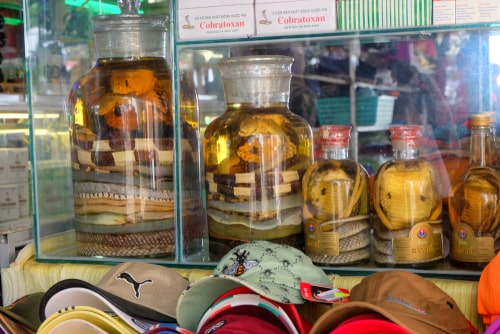
31. Snake wine, which is made by steeping whole snakes in rice wine for their venom or essence, is commonly drunk for health, vitality and restorative purposes.
32. Vietnam’s street food culture is quite popular and considered by many to be one of the best in the world.
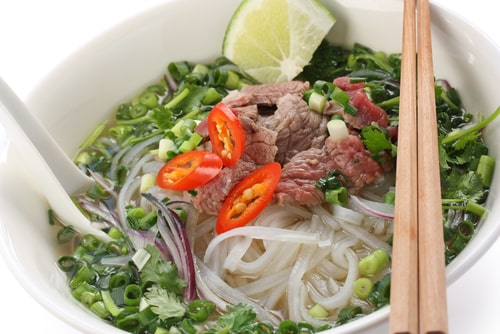
33. Noodles or “pho” are the second most popular food in Vietnam, after boiled rice.
Map of Vietnam
Tourism in Vietnam
34. Fishing is one of Vietnam’s most widespread hobbies.
35. Elephant rides are another very popular local activity often enjoyed by tourists.
36. The Dong Tam snake farm and the living museum was established in 1979 and is responsible for conserving the species and finding antidotes to their venom.
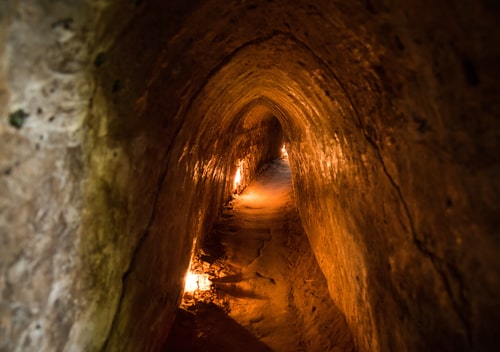
37. The tunnels of Cu Chi are a network of underground pathways that were used as a military base for the Viet Cong soldiers in their resistance of American forces.
38. The Forbidden Purple City is a walled fortress and palace in Hue that was only accessible to the royal family and their eunuch servants.
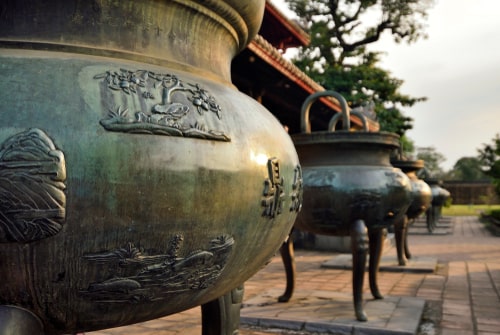
39. The Nine Dynastic Urns symbolize sovereignty and are each named after an Emperor.
40. The Hoan Kien turtle is one in only four known living ones from its species.
. . . continue reading facts about Vietnam on the next page
